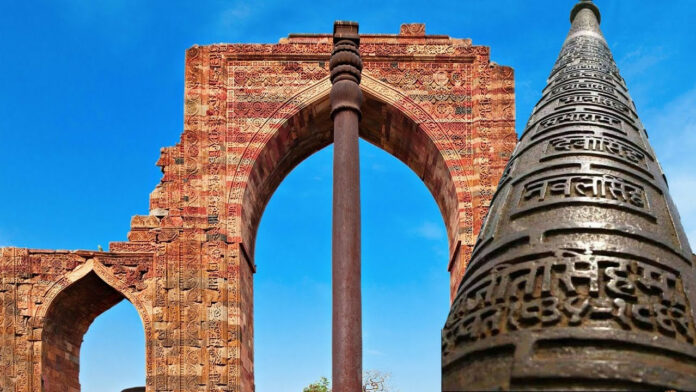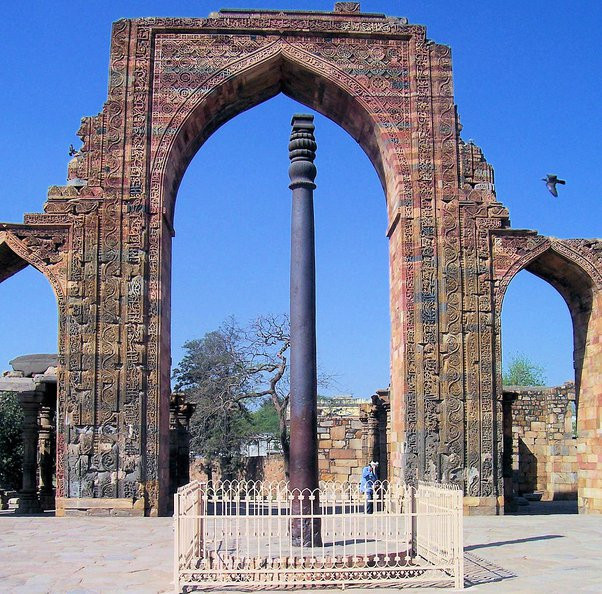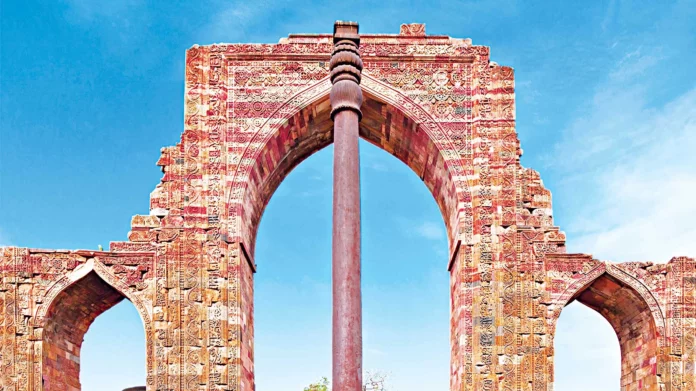A Historical Enigma

The Iron Pillar, dating back to AD 402, is situated within the courtyard of the Quwwat-ul-Islam Mosque, alongside the iconic Qutub Minar in Delhi. Standing seven meters tall and weighing six tonnes, it might appear as an ordinary piece of ancient architecture, but its historical significance extends far beyond its imposing presence.
The Pillar’s Resilient Mystery
For over a century, since its discovery by scientists in the early 1900s, the pillar has baffled experts due to its remarkable resistance to corrosion. Despite being exposed to the harsh elements of Delhi’s climate—characterized by extreme temperatures and rising pollution—the pillar remains virtually rust-free.
The Composition and Theories
One prevailing theory attributes the pillar’s durability to its unique composition. The Iron Pillar is made of 98 percent wrought iron and contains a high level of phosphorus, with negligible amounts of sulfur and magnesium. According to Delhi Tourism, the pillar was constructed to withstand a relative humidity of about 70 percent, which aligns with the climatic conditions of Delhi.
In 2003, metallurgists from the Indian Institute of Technology (IIT) in Kanpur revealed that the pillar’s rust resistance is due to a thin layer of misawite—a compound of iron, oxygen, and hydrogen. This discovery was published in the journal Current Science and was described by R Balasubramanian, a co-author of the study, as “a living testimony to the skill of metallurgists of ancient India.”
Cultural and Historical Significance

The Iron Pillar is not just an architectural wonder but also a subject of cultural legend. According to inscriptions dating back to the fourth century, the pillar was originally erected as a “Vishnudhvaja” (flagstaff) in honor of the Indian god Vishnu and to commemorate a king named Chandra. This inscription, translated by John Faithful Fleet in 1888, refers to King Chandra as a powerful monarch with a divine connection to Vishnu.
However, the identity of King Chandra remains debated. Many scholars believe he was the Gupta emperor Chandragupta II. Delhi Tourism suggests that the pillar was initially placed in Udayagiri, Madhya Pradesh, and later moved to Delhi by Sultan Iltutmish in 1233.
Legends and Urban Myths

Local legends add another layer to the pillar’s mystique. According to one story, the pillar was meant to be implanted into the hood of the celestial serpent supporting the earth. A curse was placed on anyone who disturbed it, and when the Tomara prince who relocated the pillar to Delhi had it dug up, the base was found smeared with the serpent’s blood. The curse allegedly led to the decline of the Tomara Dynasty, a story encapsulated in the verse: “Kelee to dheelee bhaee, Tomara bhava mat heen,” meaning “the pillar was loosened, and the Tomar lost his head.”
Conclusion
The Iron Pillar of Delhi stands as a remarkable intersection of ancient engineering, historical enigma, and cultural legend. Its continued resistance to rust not only showcases the advanced metallurgical skills of ancient India but also invites ongoing exploration and interpretation. As both a historical artifact and a cultural symbol, the Iron Pillar remains an enduring marvel, captivating the imagination of historians, scientists, and visitors alike.

